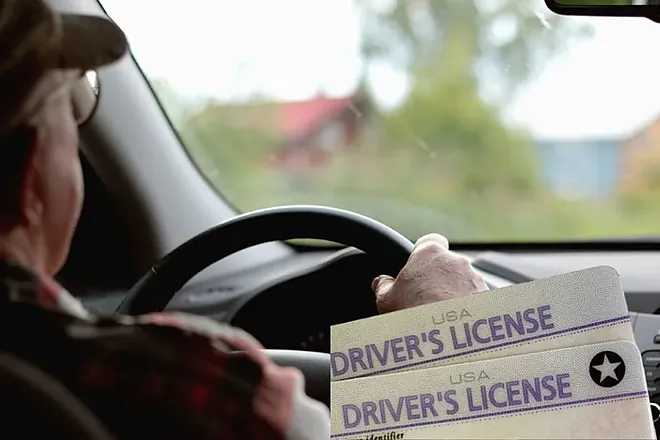- Over 70? Expect vision tests and more frequent renewals.
- Over 80? Reaction time tests and shorter renewal cycles apply.
- Over 87? Practical driving tests every 2 years may be required.
- Community reporting and restricted licenses offer flexibility without loss of independence.

As of August 2025, the United States is implementing new driver’s license regulations for seniors. These rules are designed to improve road safety for older adults while maintaining their independence. With over 48 million Americans aged 65+ currently holding active licenses, these changes aim to balance mobility and safety effectively.
In this article, we break down the age-specific renewal requirements, the role of community reporting, and alternative mobility options available for seniors.
Why the New Driver’s License Regulations for Seniors Are Important
The U.S. Department of Transportation identified the need for updated rules due to:
- Aging-related challenges: Slower reflexes, reduced vision, and cognitive decline can affect driving skills.
- Rising senior population: More Americans are living longer and driving into their 70s, 80s, and beyond.
- Road safety: Preventing accidents without unnecessarily restricting independence.
These measures are not age-based bans. Instead, they provide opportunities for seniors to prove their driving skills remain intact.
New Driver’s License Renewal Requirements by Age
The new rules introduce age-specific renewal intervals and assessments. The requirements are as follows:
| Age Range | Renewal Interval | Required Tests | Notes |
|---|---|---|---|
| 70–79 | Every 5 years | Vision test | Ensures seniors maintain adequate vision for safe driving. |
| 80–86 | Every 3 years | Vision + Reaction Time test | Evaluates reflexes and cognitive processing speed. |
| 87+ | Every 2 years | Vision + Reaction + Practical Driving Test | Confirms full driving competence. |
Key takeaway: Seniors are still allowed to drive if they pass these tests or receive a restricted license. The goal is road safety without losing mobility.
Understanding Community Reporting and Restricted Licenses
A unique feature of the new driver’s license regulations for seniors is the community reporting system:
- Who can report: Family members, doctors, neighbors, or caretakers.
- Purpose: Flag drivers who may be unsafe due to age-related issues.
- Outcome: Could trigger a medical review or reassessment by the DMV.
Even if a senior fails a test, they may still receive a restricted license:
- Restrictions could include:
- No night driving
- No highway driving
- Limited to urban or local areas
This approach ensures safety without fully restricting independence.
State-Specific Flexibility
While federal rules provide a baseline, states have the authority to adapt or enhance the regulations:
- Some states may shorten or lengthen renewal intervals.
- States may add additional assessments or reporting mechanisms.
- It is essential for seniors to check their state DMV website for specific guidance.
Mobility Alternatives for Seniors
Recognizing that giving up driving can reduce independence, the new rules encourage seniors to explore alternative transportation:
- Ride-hailing services: Uber and Lyft offer senior-friendly options.
- Community transportation programs: Many cities provide subsidized or free rides.
- Government programs: Initiatives by the Administration for Community Living provide mobility assistance.
These options ensure seniors maintain mobility even if driving restrictions are required.
Practical Steps for Seniors Under the New Driver’s License Regulations
- Check your current license and renewal date.
- Prepare for required tests based on your age group:
- Vision tests (70+)
- Reaction time tests (80+)
- Practical driving tests (87+)
- Explore restricted license options if full renewal is not possible.
- Research alternative transportation for flexibility.
- Stay updated on your state-specific DMV rules.
Quick Age-Based Renewal Flowchart
Here’s a concise guide to determine what applies to your age:
Step 1: Identify Your Age
- 70–79 → Renewal every 5 years + vision test
- 80–86 → Renewal every 3 years + vision + reaction test
- 87+ → Renewal every 2 years + vision + reaction + driving test
Step 2: Consider Community Reporting
- Family or doctors may request reassessment if safety concerns arise.
Step 3: Explore Restricted License or Mobility Alternatives
- Restricted licenses maintain some driving freedom.
- Use Uber, Lyft, or local senior transport programs if full driving isn’t possible.
Benefits of the New Driver’s License Regulations for Seniors
- Improved safety: Reduces accident risk linked to aging-related impairments.
- Maintained independence: Restricted licenses and alternatives prevent total loss of mobility.
- Community involvement: Family and medical professionals can contribute to safety monitoring.
- Flexibility: States can tailor regulations to local needs.
The new driver’s license regulations for seniors coming into effect in August 2025 strike a careful balance between safety and independence. With age-specific renewal intervals, mandatory vision and reaction tests, and the possibility of restricted licenses, seniors can continue to drive responsibly.
By staying informed, preparing for tests, and exploring alternative transportation options, older adults can maintain their freedom while ensuring safer roads for everyone.





